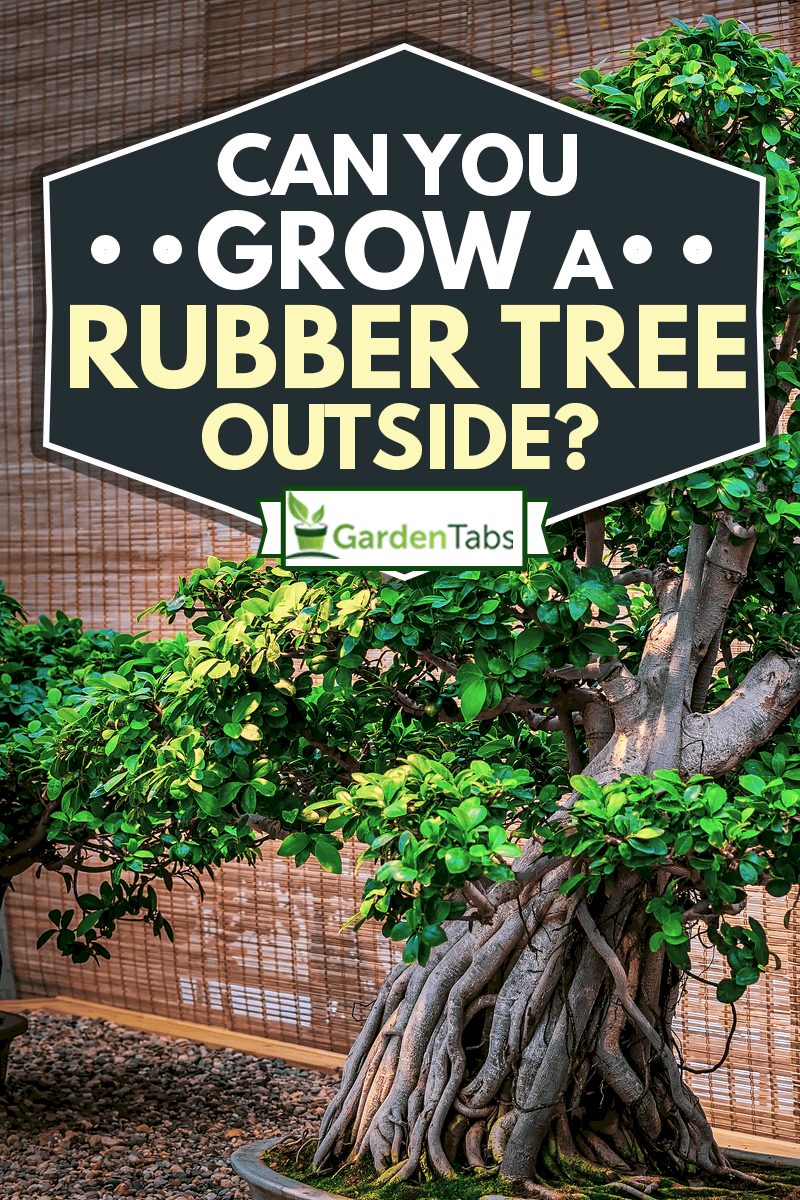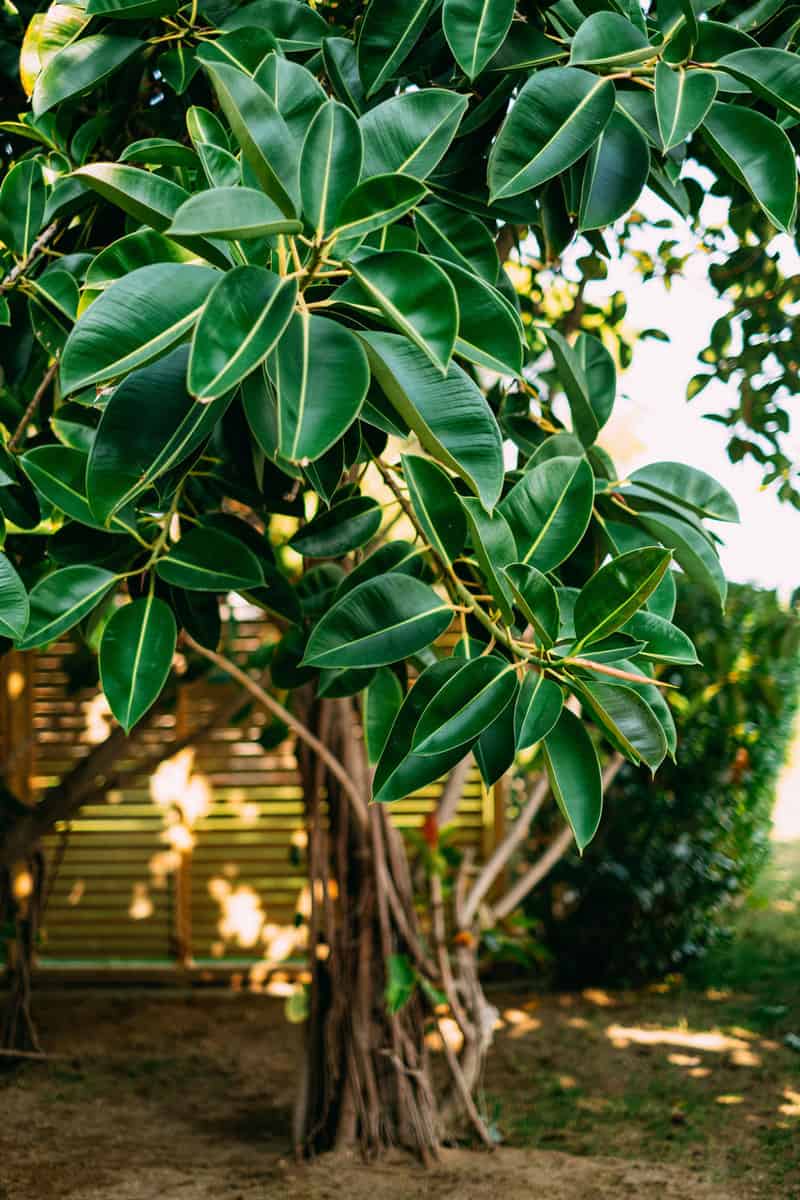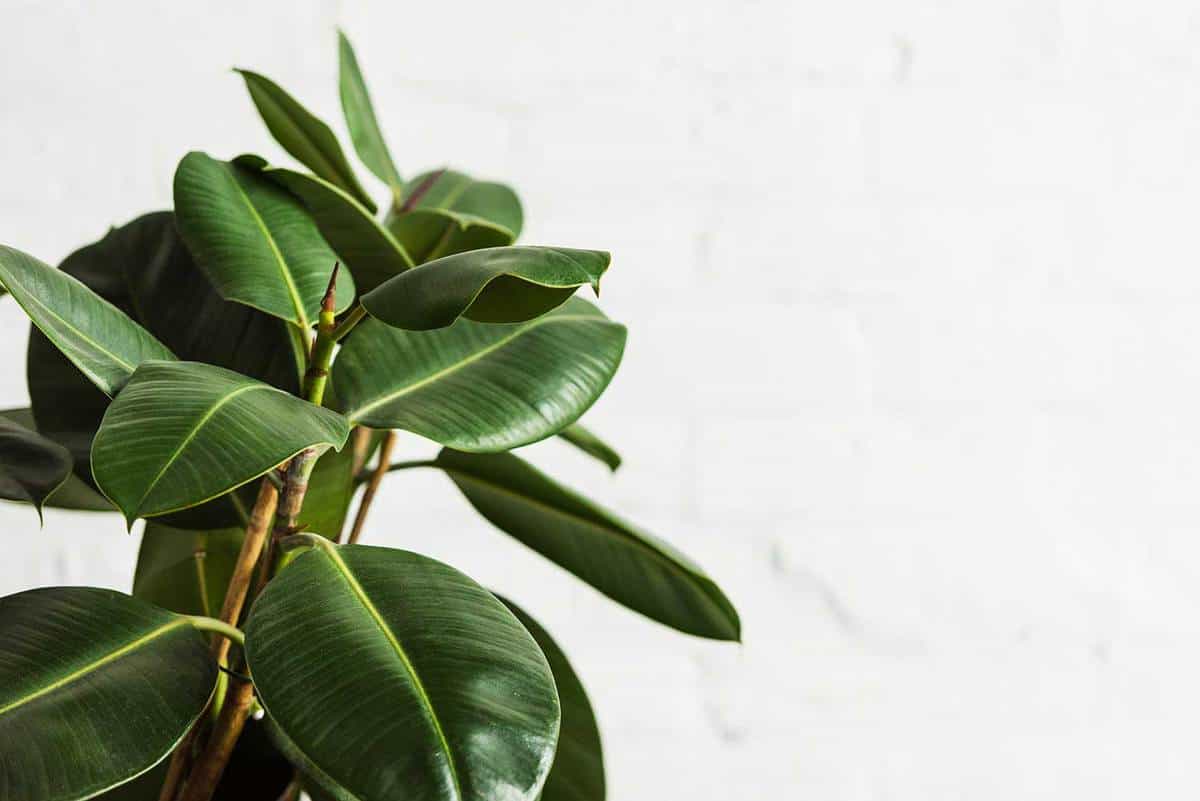Rubber trees originated outside. Does this mean you can either grow them outside or keep them indoors? Well, much of that depends upon where you live. We've researched to find out what it takes to grow your rubber tree outdoors.
To grow a rubber tree outside, you'll first need to live in USDA Plant Hardiness Zones 9-11. Consider other factors like temperature range, wind tolerance, direct sun tolerance, and soil temperature to determine if a rubber tree will thrive in your landscape.
Let's take a look at what it takes to grow this gorgeous plant in the great outdoors. We'll also look at some factors necessary for their survival, where they grow worldwide, how tall they will get, and information on pests and winter tolerance. So please, keep reading for more information.

Can You Grow A Rubber Tree Outdoors?
We mostly know rubber trees (ficus elastic) as house plants. They were cultivated many years ago as house plants and have remained popular since. However, rubber trees were an outdoor tree originally. This popular plant originates from the Himalayas to Malaysia, Sumatra, and Java, where it grows in the wild.
In the United States, the rubber tree can be grown outdoors in the right environment. For us, that means USDA Plant Hardiness Zones 9-11. Though even in zone 9, it may need a bit of extra protection from winter weather. Ideal temperatures are between 60 to 85 degrees, which coincide with these hardiness zones. However, you can grow a potted rubber tree outdoors anywhere as long as the temperature is warm.
Besides zones and temperature range, there are some other factors to consider when trying to grow a rubber tree outdoors. Things like the wind and sun tolerance, moisture levels, and soil type are factors to consider when choosing a planting location.
Wind And Sun Tolerance
Because rubber plants naturally grow in the understory, they prefer filtered sunlight and some protection from their taller cousins. They need an outdoor location where they are not in the most direct sunlight and not deep shade. If you live in zone 9 in particular, think of planting your rubber tree in a place where it's protected from the wind and colder drafts.
Moisture And Soil Needs
Ficus elastica likes moist, well-drained soil. It won't do well in a spot that holds moisture indefinitely, and likewise, it won't do well in a spot where water can't penetrate. It's always a great idea to give your rubber tree a bit of soil supplement wherever you plant it.
A planting soil like this adds extra nutrients and aeration to the soil, establishes new plantings, and refreshes old ones. Simply pour some into your planting hole when you plant your rubber tree. This gives the roots room to spread out and soak up all those good nutrients it needs. Click here for this on Amazon.
Where Can Rubber Trees Grow?
Ficus elastica, not to be confused with Hevea brasiliensis, is native to parts of Asia, which includes the Himalayas, Malaysia, Sumatra, and Java. It can grow outdoors in tropical parts of other countries, including Australia, the United States, and Central and South America. It all depends on the right factors being present for the plant. Too cold, and it will not overwinter when planted outdoors.
How Tall Do Rubber Trees Get?
Rubber trees can get between 20 and 30 feet tall in most United States' outdoor locations. It is widely grown in the tropics as an ornamental tree. Mature trees develop banyan-like aerial roots that form trunks. In their native rainforests, you may find some species growing as large as 50 feet tall and remain in the understory. Even rubber trees in permanent pots outdoors can get quite tall if they have enough room for their roots and the right location, weather, and temperature-wise.
What Type Of Soil Do Rubber Trees Like?
Rubber trees are hardy plants and don't require fancy soil or special feeding. As long as their roots aren't bogged down with too much liquid, they do well in most soil types. Of course, if you have extreme sand or extreme clay, it may be a good idea to give your rubber tree some soil amendment with a more traditional type of garden soil for it to thrive.
It's sometimes possible to find really specialized soil for these plants. Though this packaging is for an indoor plant, bulk sizes may be available with inquiry. That way, you have exactly the right mix you need for a thriving plant. Click here to see this on Amazon.
Do Rubber Trees Attract Pests?

Rubber trees are susceptible to some pests if they're not healthy. Scale insects, mealybugs, aphids, thrips, and spider mites attack these plants. All can do damage that weakens the plant, making it unhealthy.
Aphids attack the plant by sucking nectar out of their leaves and can cause the leaves to dot with brown or yellow holes and eventually fall from the tree's trunk. Scale and mites similarly attack the leaves and leave behind a lacy pattern of destruction that's a telltale sign of trouble. Mealybugs also suck out the juices of the leaves, causing them to turn yellow. Thrips rarely affect indoor rubber trees but are a problem for the outdoor varieties.
How To Deal With Pests On Rubber Trees
If your plant has an infestation of any of the above pests, you'll want to remedy the problem. Insecticidal soaps and products like Neem Oil work to prevent and repel the bugs. If damage has already been caused, you'll need to take the time to prune and trim back any healthy parts so that your plant can expend all of its energy on new growth rather than repair. But don't worry, your rubber tree is a hardy plant, and it should heal fully given the proper medicine.
This easy spray pump insecticide works wonders on mites, scales, and other insects that might be attacking your rubber tree. It has a handy attached sprayer that will make squirting this onto your tree's leaves super easy. Click here for this solution on Amazon.
An all-natural alternative that can help stop bug problems before they start and chase bugs away is Neem Oil. It's great because it kills the egg, larvae, and adult stages of insects while also preventing the fungal attack of plant tissues. It can be used at the dormant stage, green tip stage, delayed dormant stage, and growing season to prevent pest infestations and disease. Click here for this on Amazon.
Will A Rubber Tree Survive Winter?
If you're in the proper USDA Plant Hardiness Zones 9-11, your rubber tree will survive most winters. If you're going to have prolonged weather below 60 degrees, protections may need to be put into place. Consider planting your rubber tree in a protected spot. A few larger trees, or the side of the house, or even the patio, are great foils to the wind and cold.
If you have a potted rubber tree that lives outdoors, consider moving it indoors during the winter months. Then it has a better chance of surviving anything winter can throw its way. Remember, this is a tropical plant, which means it likes tropical weather.
The Great Outdoors For House Plants

You can always pot up your large rubber tree if you're unsure. Then pull it in out of the elements when things get too cold. If you're somewhere south and tropical, pop one in the garden and see how it grows. It may really thrive, and they're not terribly expensive plants if you want to give one a try outside.
If you enjoyed this post about rubber trees, check out a few others that may help.
How Big Does A Rubber Tree Get [Indoors And Outside]
10 Types Of Rubber Trees And Plants




